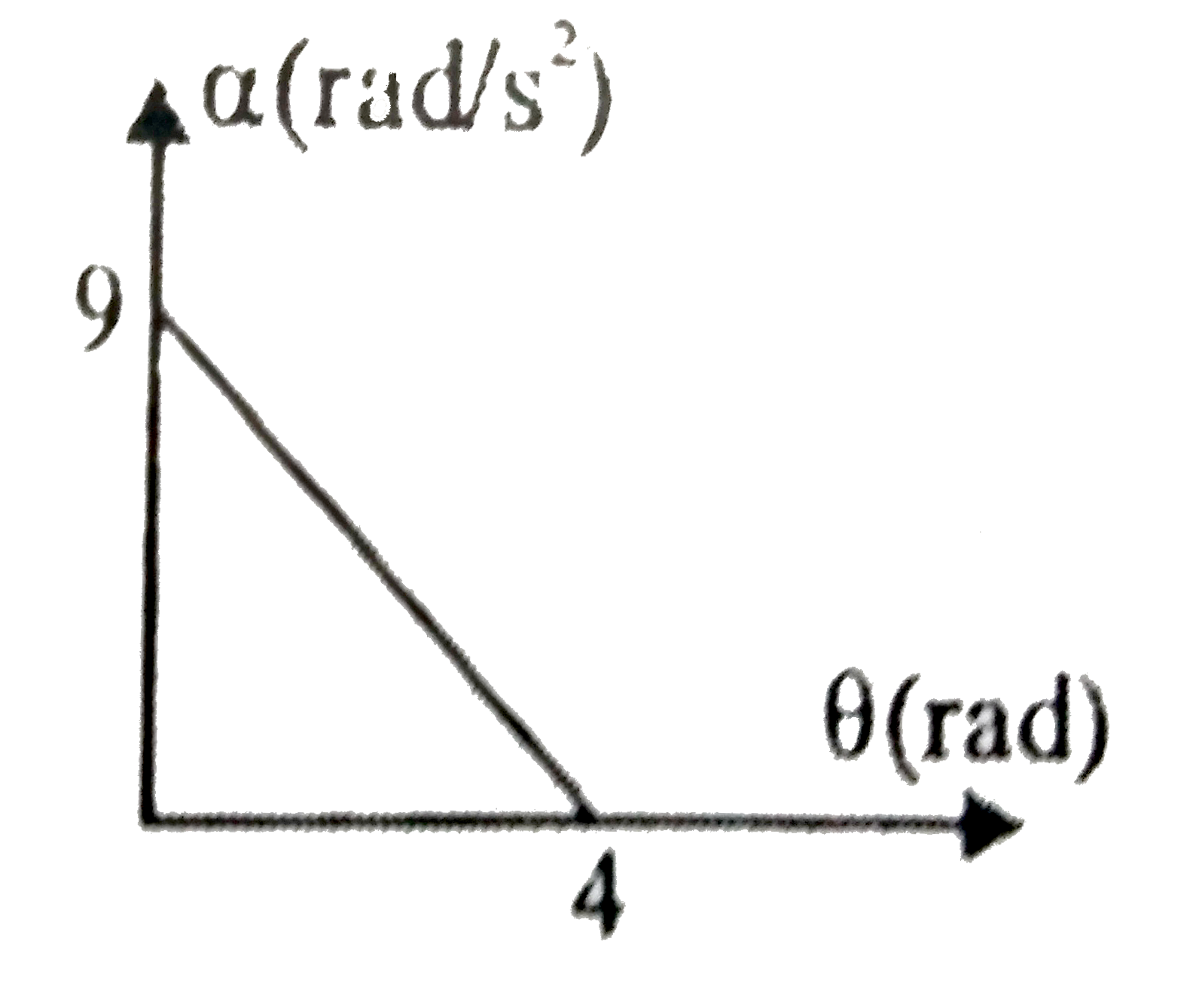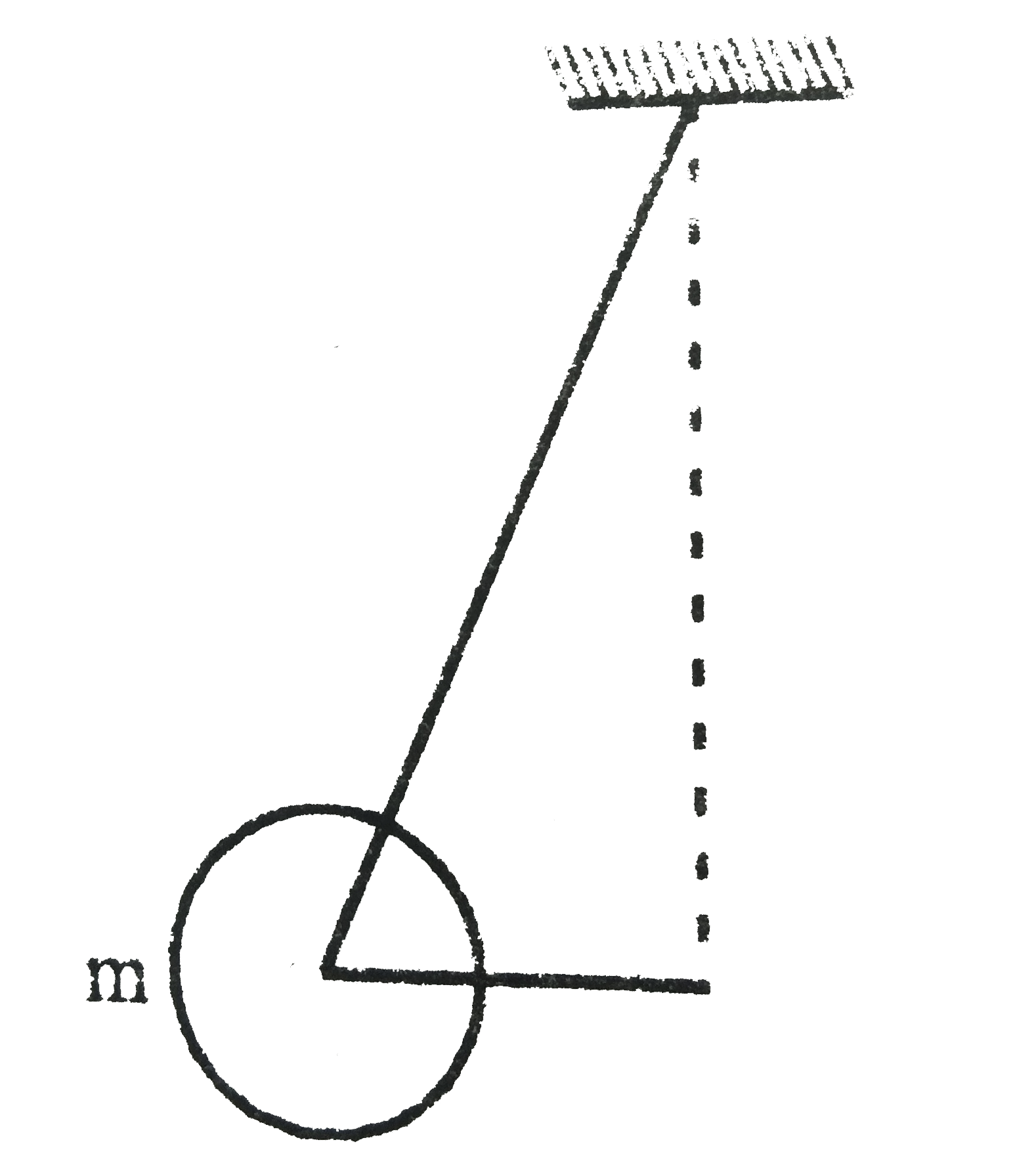A particle starts moving in a non-uniform circular motion, lies angular acceleration as shown in figure. The angular velocity at the end of 4 radian is given by ω rad/s then find the value of ω.
 Solution in Gujrati
Solution in Gujrati
The correct Answer is:6
Step by step video & image solution for A particle starts moving in a non-uniform circular motion, lies angular acceleration as shown in figure. The angular velocity at the end of 4 radian is given by omega rad/s then find the value of omega. by Physics experts to help you in doubts & scoring excellent marks in Class 12 exams.
Updated on:21/07/2023Topper's Solved these Questions
- CIRCULAR MOTIONBOOK - ALLEN CHAPTER - CIRCULAR MOTIONEXERCISE - Dynamics of circular motion
8 Videos
- CIRCULAR MOTIONBOOK - ALLEN CHAPTER - CIRCULAR MOTIONEXERCISE - EXERCISE(S-2)
6 Videos
- CIRCULAR MOTIONBOOK - ALLEN CHAPTER - CIRCULAR MOTIONEXERCISE - EXERCISE (J-A)
6 Videos
- BASIC MATHSBOOK - ALLEN CHAPTER - BASIC MATHSEXERCISE - Question
1 Videos
- CURRENT ELECTRICITYBOOK - ALLEN CHAPTER - CURRENT ELECTRICITYEXERCISE - EX.II
66 Videos
Similar Questions
The ball of mas m moves with speed v againest a smooth , fixed vertical circular groove of radius R kept on smooth horizontal surface find the
a. normal reaction of the floor or the ball.
b. normal reaction of the vertical wall on the ball.
View SolutionA stone is launched upward at 45∘ with speed v0. A bee follow the trajectory of the stone at a constant speed equal to the initial speed of the stone.
(a) Find the radius of curvature at the top point of the trajectory.
(b) What is the acceleration of the bee at the top point of the trajectory? For the stone, neglect the air resistance.
View SolutionA ball of mass (m)0.5kg is attached to the end of a string having length (L)0.5m. The ball is rotated on a horizontal circular path about vertical axis. The maximum tension that the string can bear is 324N. The maximum possible value of angular velocity of ball (radian/s) is -
 .
.
View SolutionFind dydx for the following :
(i) y=x7/2 (ii) y=x−3
(iii)y=x (iv) y=x5+x3+4x1/2+7
(v) y=5x4+6x3/2+9x (vi) y=ax2+bx+C
(Vii)y=3x^(5)-3x-1/x
View SolutionIn the Bohr's model of hy drogen atom, the electron moves around the nucleus in a circular orbit of radius 5×10−11m. Its time period is 1.5×10−16s. The current associated with the electron motion is:-
View SolutionA particle starts moving in a non-uniform circular motion, lies angular acceleration as shown in figure. The angular velocity at the end of 4 radian is given by omega rad/s then find the value of omega .
View Solutionएक कण कागज के तल में वृत्तीय पथ पर ω कोणीय वेग से वामावर्त ( anticlockwise) दिशा में गतिमान हैं । कण के कोणीय वेग (ω) तथा कोणीय त्वरण (∝) की दिशा क्या होगी यदि समय के साथ (i) बढ़ रहा हैं , (ii) घट रहा हैं ?
View SolutionA particle moving along a circule path of radius 'r' with uniform angular velocity omega . Its angular acceleration is
View SolutionIf a graph is plotted between angular velocity omega and distance x of a particle performing uniform circular motion, the graph is a straight line
View SolutionA particle is in circular motion in a horizotantal plane. It has angular velocity of 10πrad/s at the end of 2 s and angular velocity 15 πrad/s at the end of 4s. The angular acceleration of particle is
View SolutionThe angular velocity of a particle is given by the equation ω=2t2+5rads−1. The instantaneous angular acceleration at t=4 s is
View SolutionA particle moving in a circular path of certain radius, with uniform angular velocity ω has an angular acceleration equal to :
View SolutionA particle undergoes uniform circular motion. The velocity and angular velocity of the particle at an instant of time is v=3hat i+4hatj m//s and vec(omega )= xhat i+6hatj rad//sec The value of x in rad/s is
View SolutionA particle undergoes uniform circular motion. The velocity and angular velocity of the particle at an instant of time is v=3ˆi+4ˆjm/s and →ω=xˆi+6ˆjrad/sec
The value of x in rad/s is
View SolutionA particle undergoes uniform circular motion. The velocity and angular velocity of the particle at an instant of time is v=3ˆi+4ˆjm/s and →ω=xˆi+6ˆjrad/sec
The value of x in rad/s is
View SolutionUniform angular place on the circular path of a particle r radius omega Is moving from The acceleration of this particle is:
View Solution
